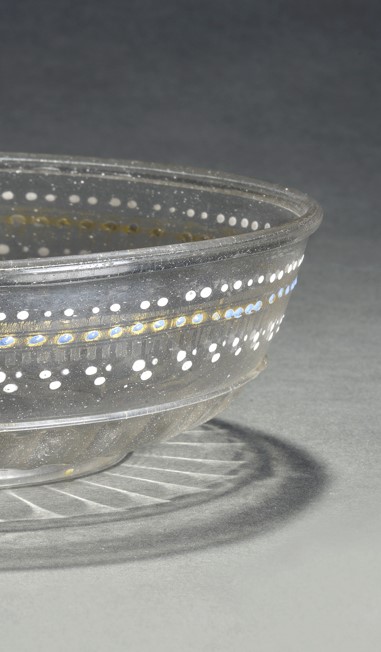
Goblet of emerald coloured glass
A funnel-shaped bowl of green-blue glass. Bowl and stem are connected by a solid colourless segment. The stem is formed by a folded and twisted green glass thread that curls down to meet the colourless segment that joins the stem to the foot and then up again where it ends under the colourless segment beneath the bowl. The glass has a slightly conical foot made of green glass.
This glass was part of a range of glasses offered by the glass workshop of Antonio Salviati (1816-1890), who between 1859 and his death in 1890 owned or was associated with several companies that developed and sold glasses inspired by historical glass. Eight photos now owned by the Glass Museum of Murano (Dorigato 2014 p. 180-183) show a stunning variety of glasses. These particular glasses are thought to be made by the fratelli Barovier (the Barovier brothers) Giovanni Barovier (1839-1908) and the sons of his brother Antonio: Giuseppe (1853-1942), Benvenuto (1855-1932) and Benedetto (1857-1930). They had all worked for Salviati from the beginning and took over his furnace in 1883. The glasses probably remained unsold and most can be dated from between 1872 and 1877 (Dorigato 2014, p. 18 and p. 24). The pictures are numbered in Roman numerals from I to VIII, the glasses have Arabic numbers.
Among many other glasses, three different types of glasses described here are shown: Because the pictures are black and white it is often difficult to determine the colour and type of glass the goblets are made of. The first glass on page I, number 452, is probably made of filigree glass, with a stem shaped from an intertwined cane with a white thread. On page II glass 477 most likely has a reticello bowl with white threads and a dark stem. Finally, on page V, we see glass 352 with a dark colour that is most probably the same colour as the glass in the Gerny collection (Migliaccio 2014, p. 182). An example made by Benvenuto Barovier between 1880 and 1900 in the Benvenuto Barovier jr. collection, was shown at the exhibition Mille Anni del vetro a Venezia (Barovier 1982, cat.nr. 451). It was executed in ‘vetro fumé’, yet another type of glass.
After the Barovier brothers separated from Salviati in 1877 the English Venice and Murano Glass Co. LTD continued to list the glass as number 346 on page 51 of their pattern book which dates from around 1895/1896 (fig. 1) (Liefkes 2015-2016, p. 132-134).
An example of this type of glass with a bowl and a foot made of ‘girasol’ glass, is included in the Stanford University collection. It was donated in about 1900 by Maurizio Camerino and Silvio Salviati together with other glasses made mostly in the 1890s. (Osborne 2002, cat.nr. 194, p. 2 and 154).
The Rheinische Glashütten-Actien-Gesellschaft in Ehrenfeld (Germany) also made this shape of glass. In 1888 it was added to the Preiscourant as catalogue number 408 and executed in ‘weiss, mit zwei Alabasterblumen’. When in 1892 the glass house celebrated its 25th anniversary, an album was made with pictures showing tableaux vivants of several important periods in glassmaking: The Phoenicians, The Romans, The Venetians, Johann Kunkel, and the Historismus period. A colourless example of this sort of glass is included in the collection of glasses that represent the repertoire of Renaissance Venetian glassblowers. It also serves as an example of the Historismus glasses made by the Ehrenfeld glassmakers themselves. (Schäfke 1979, p. 10, 12 and. 174, 175).




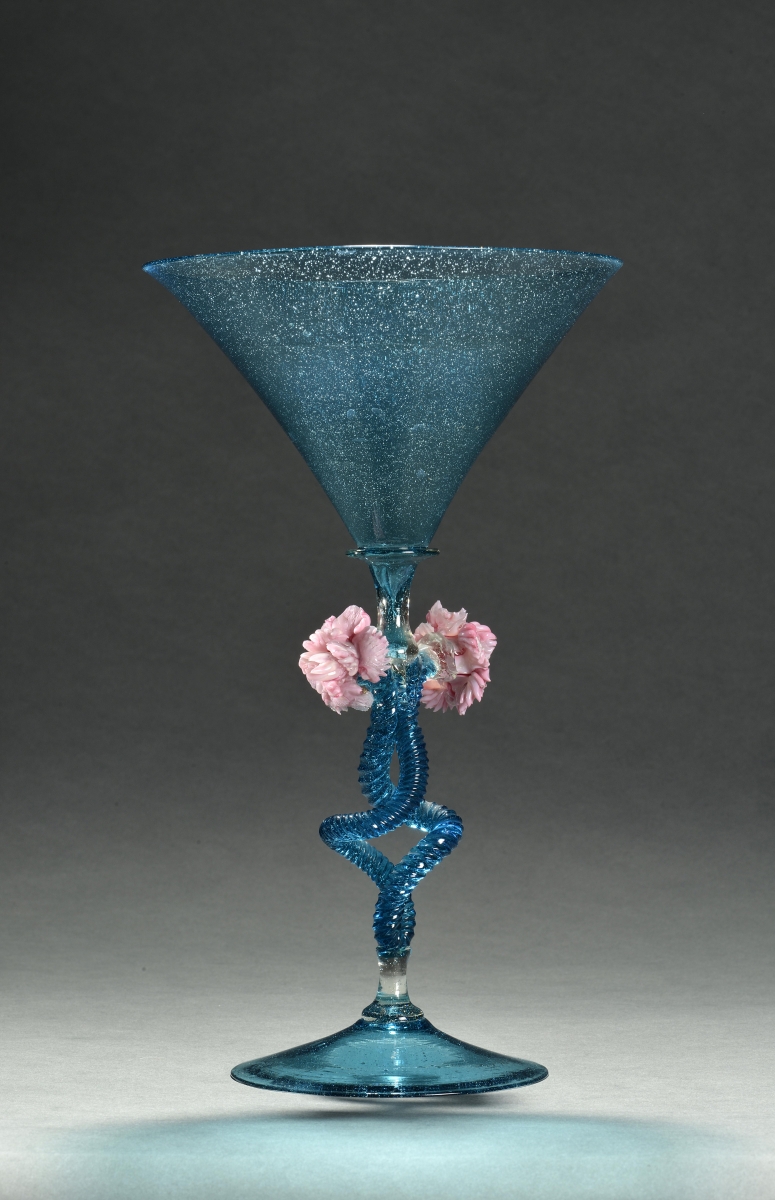

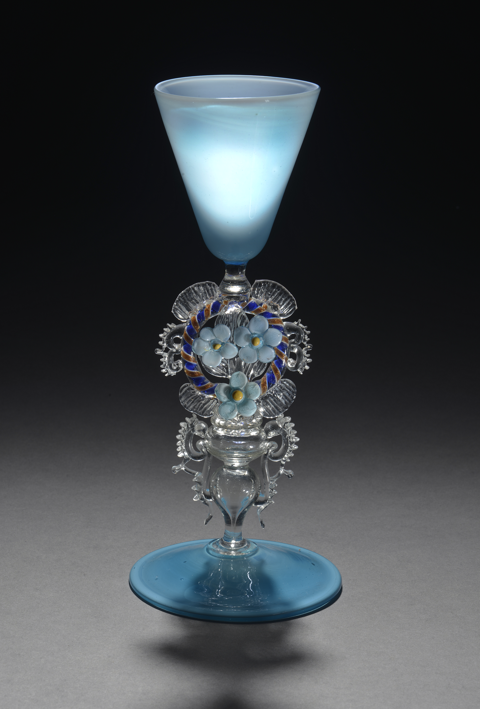



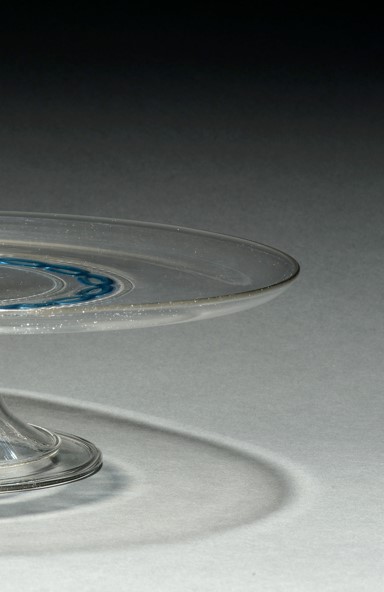
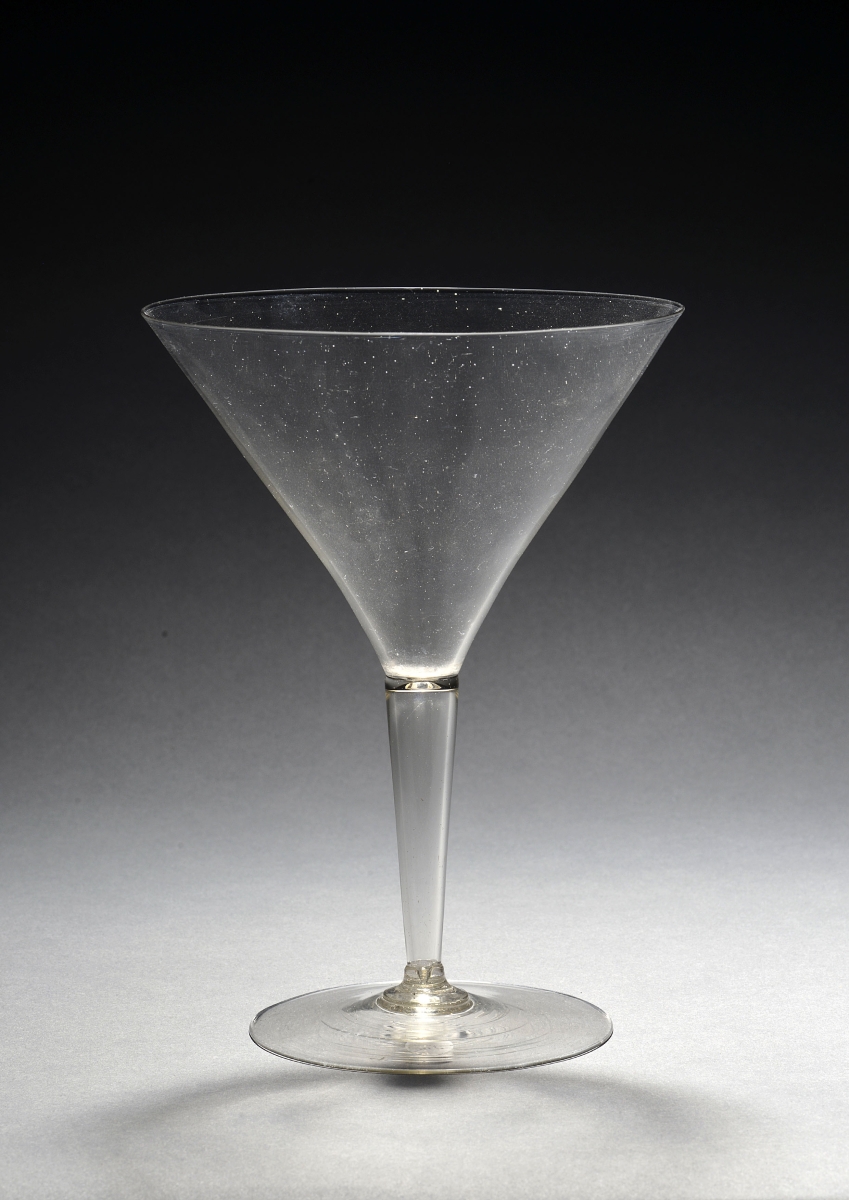
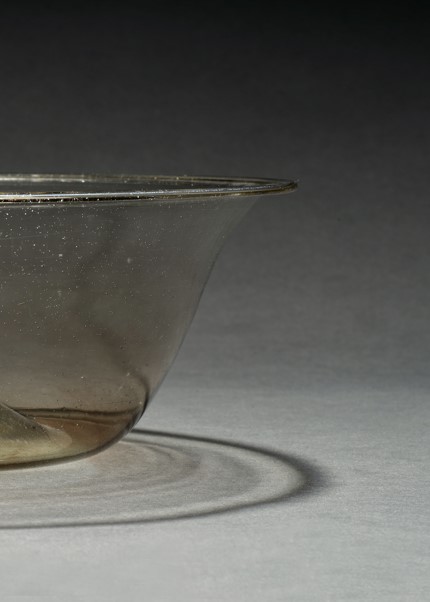
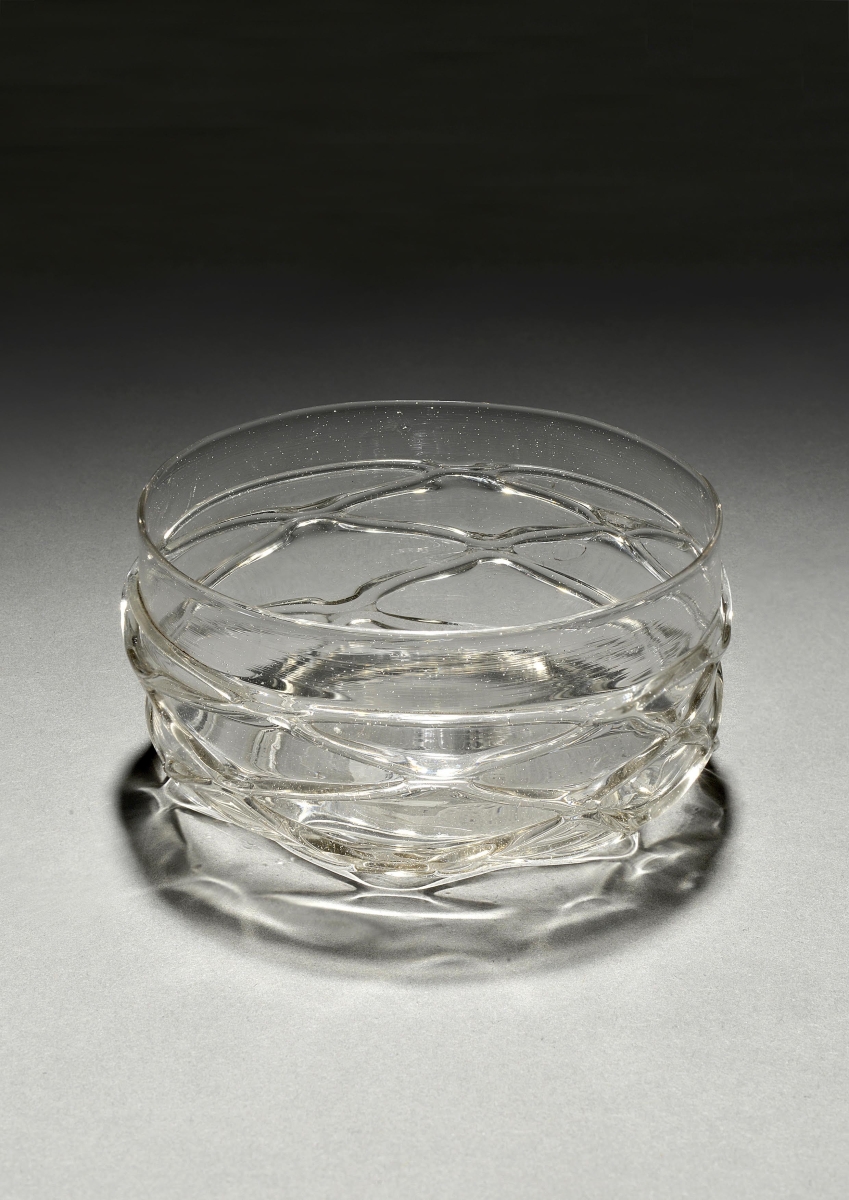
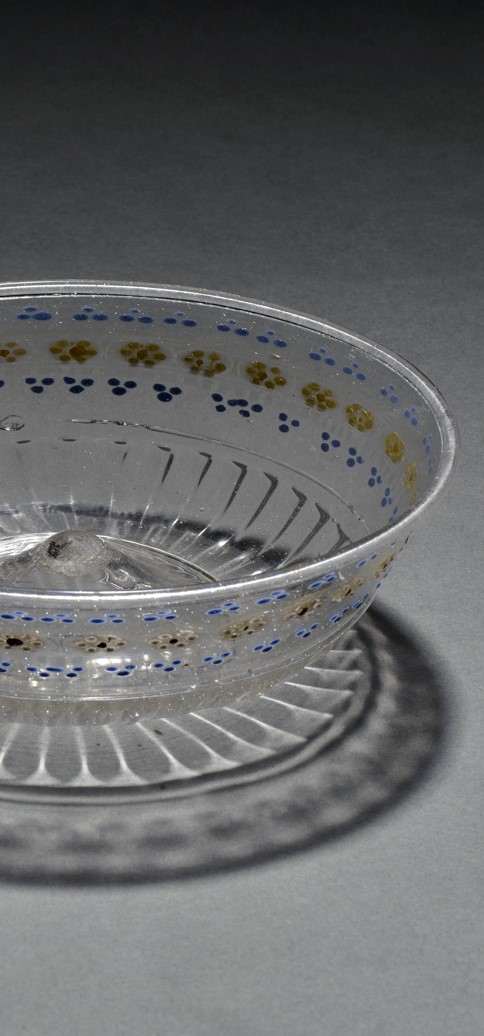
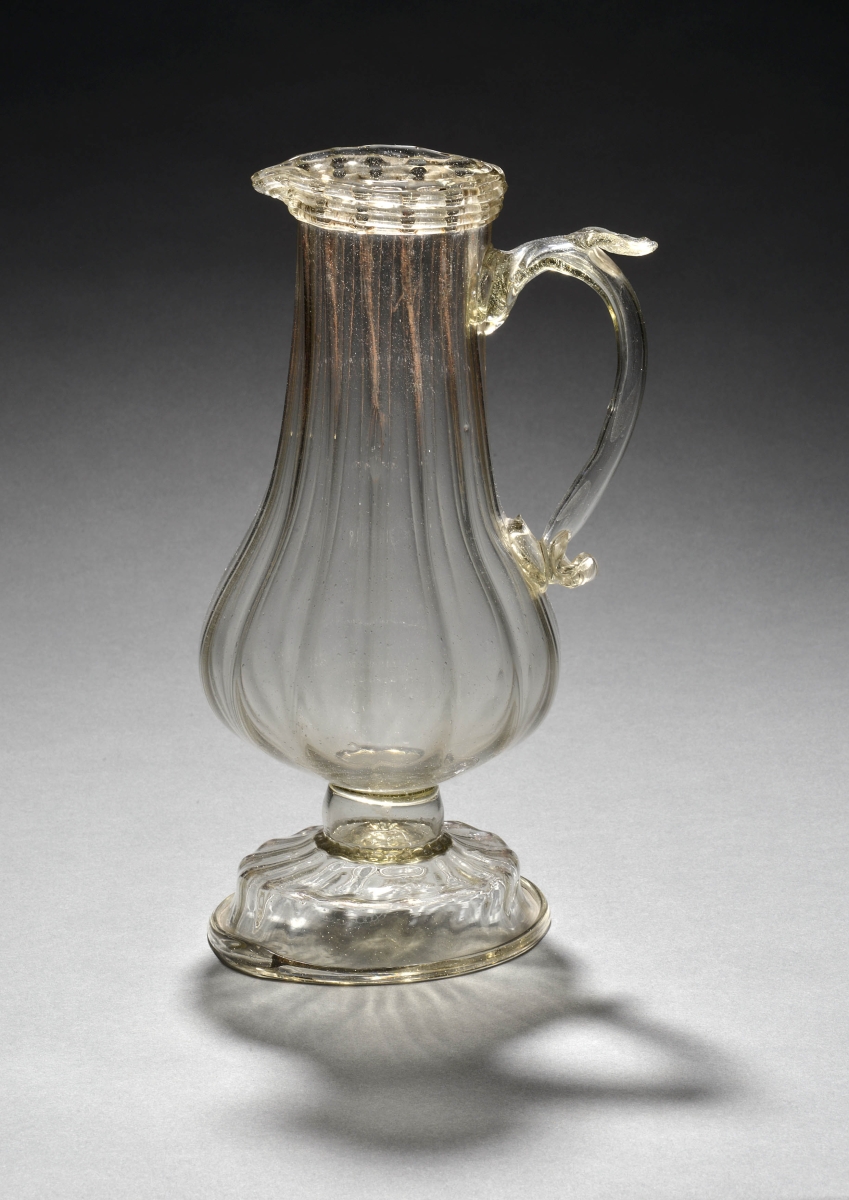
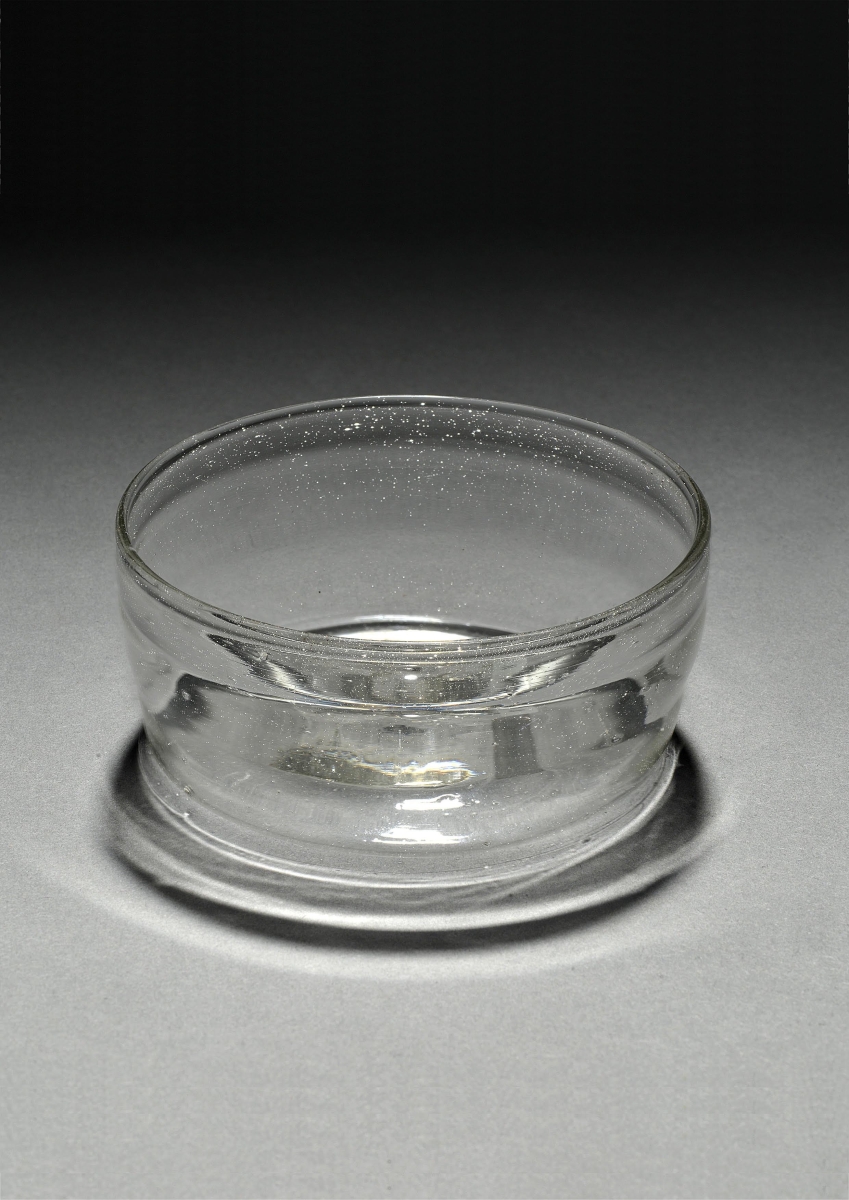
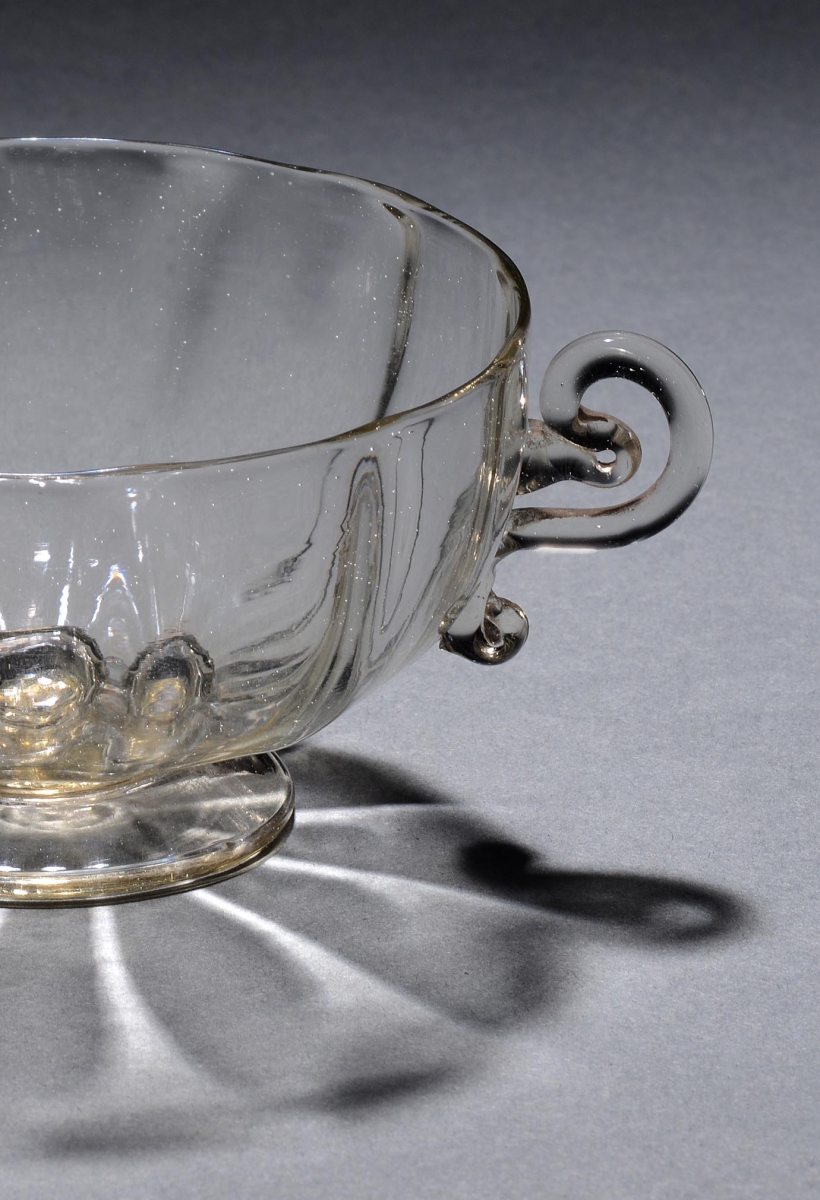
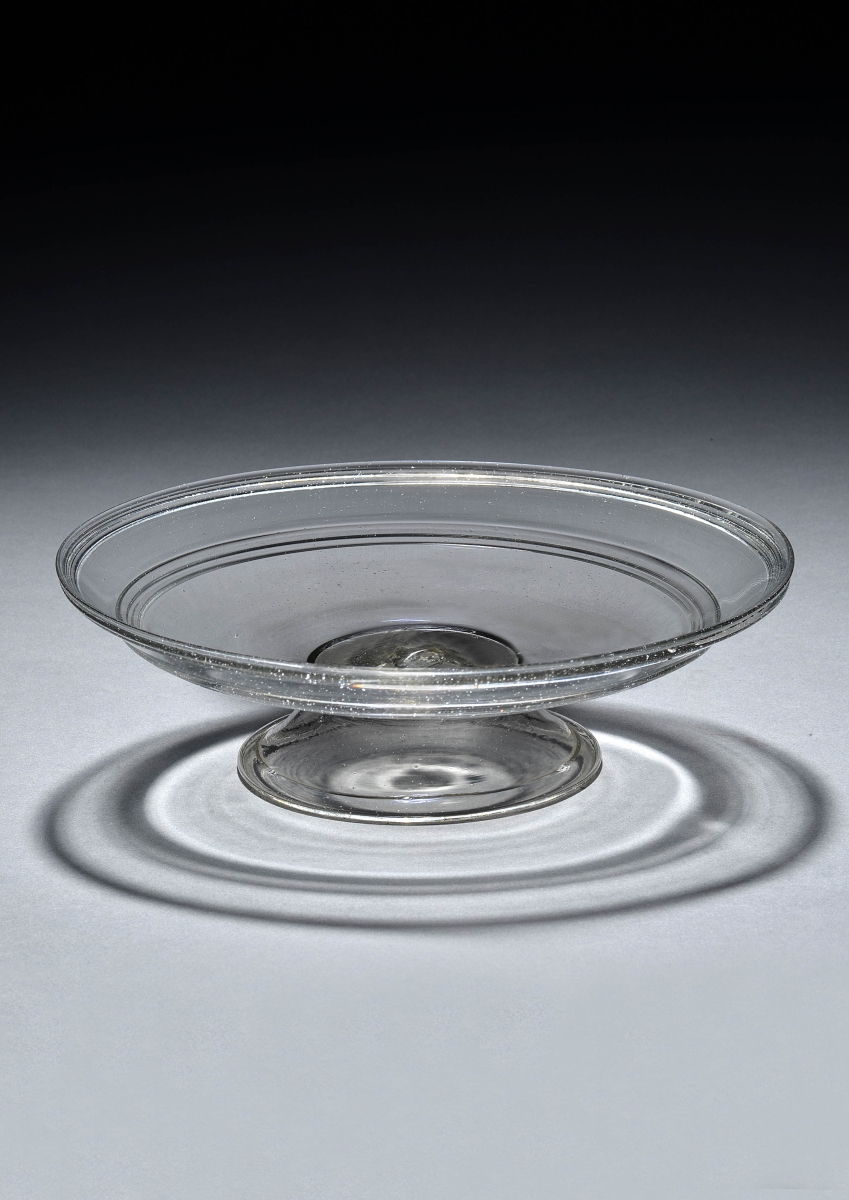
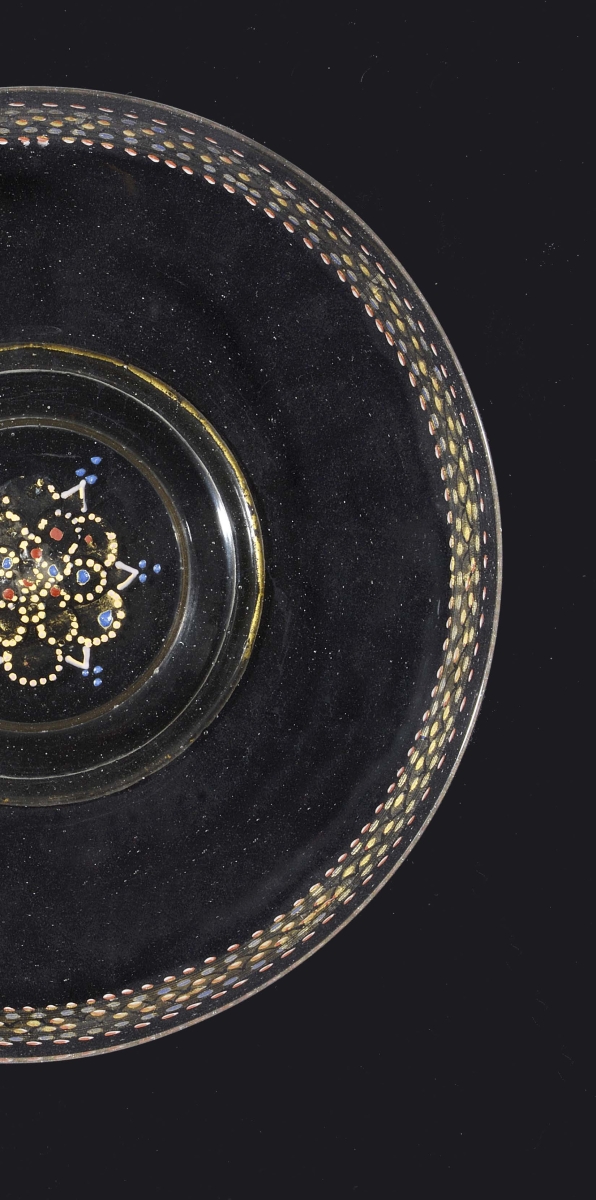
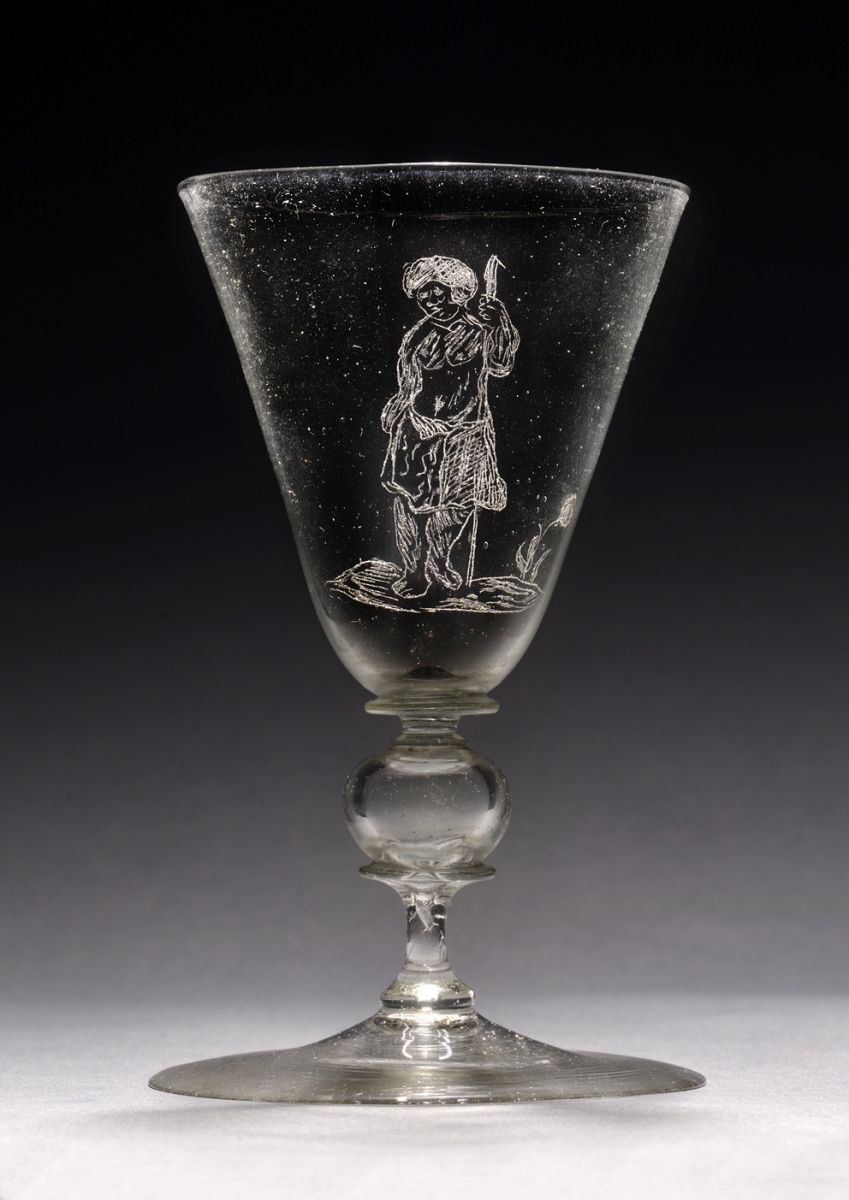
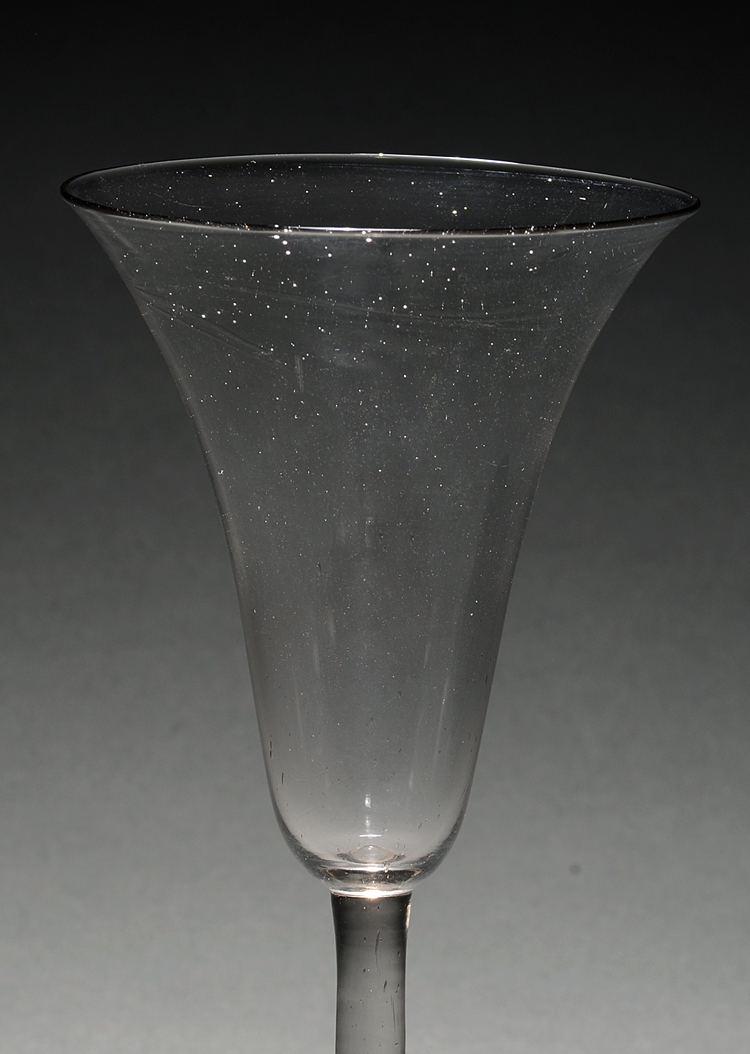


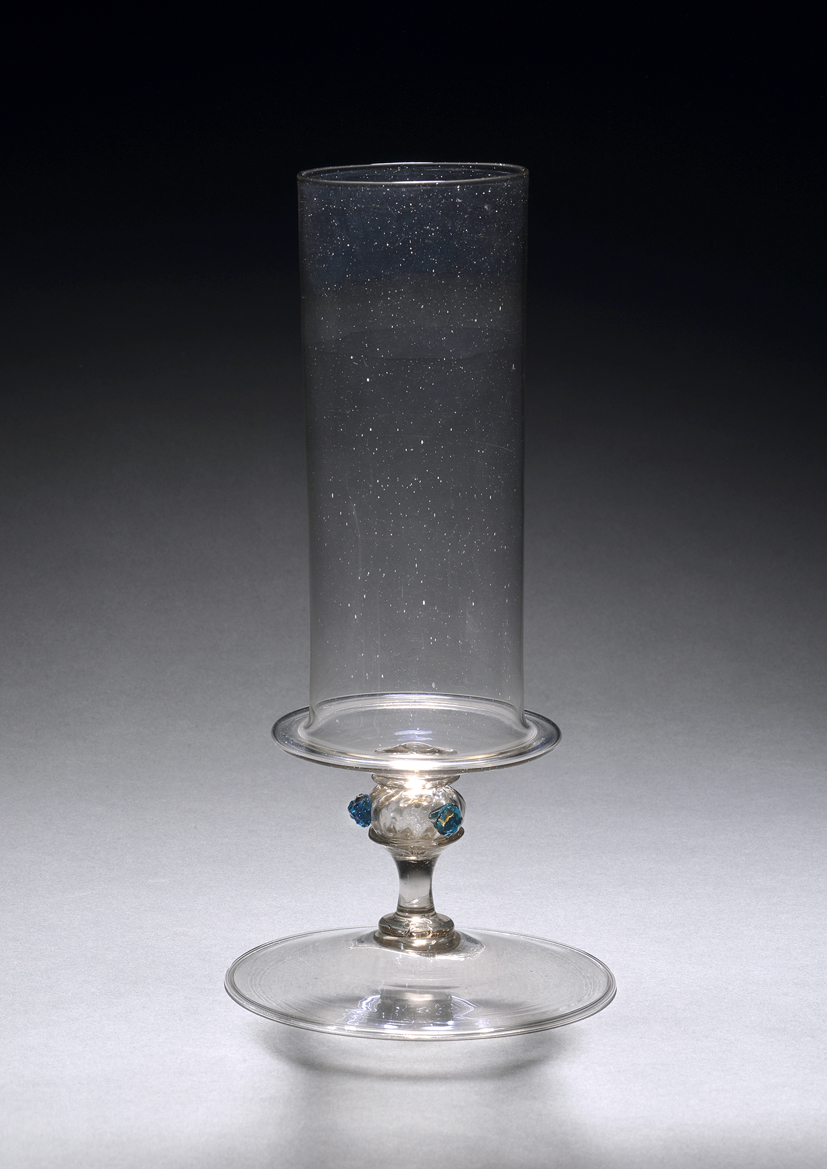
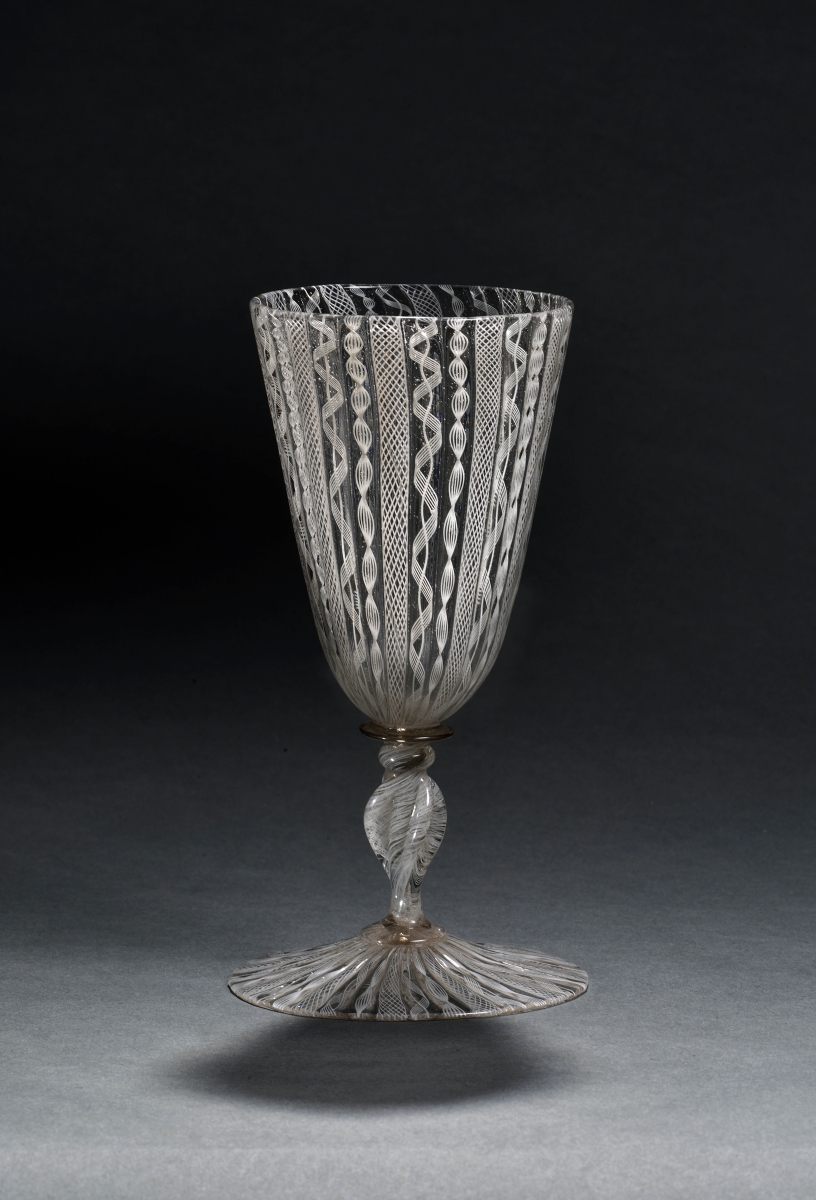
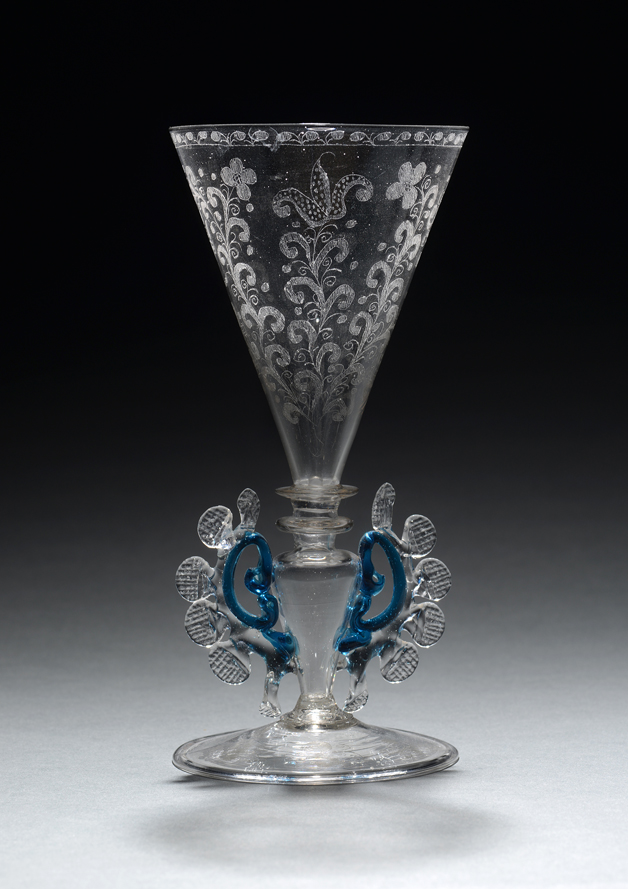
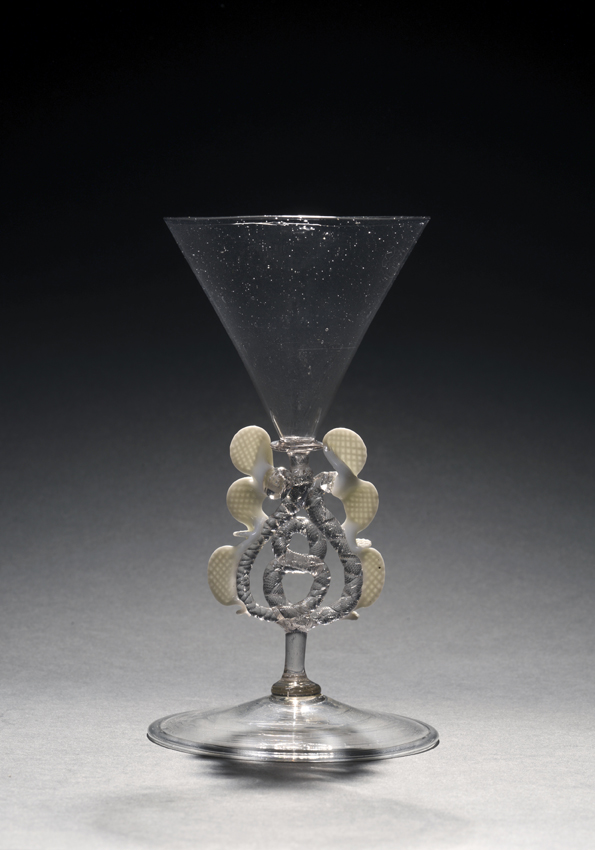

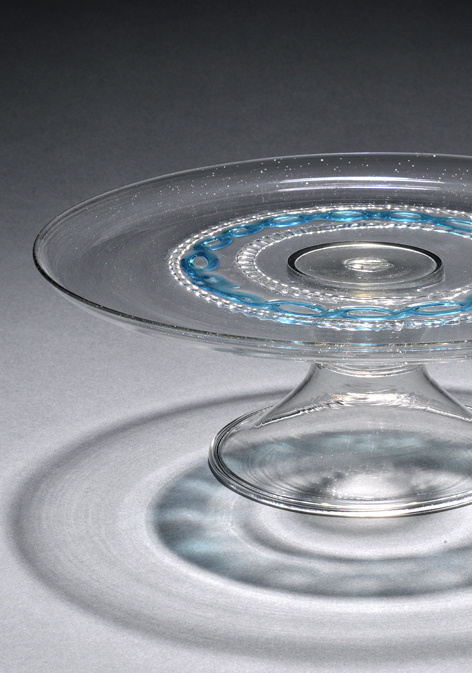
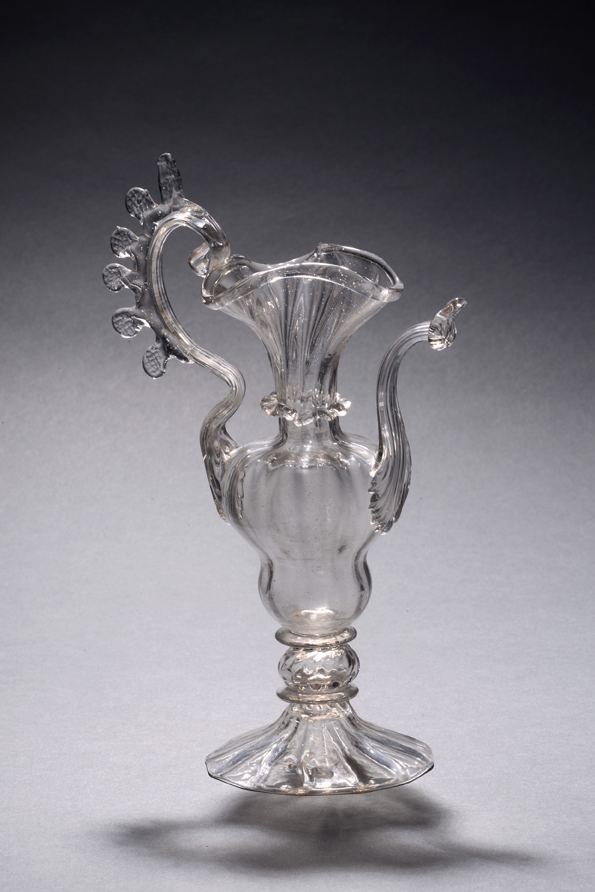
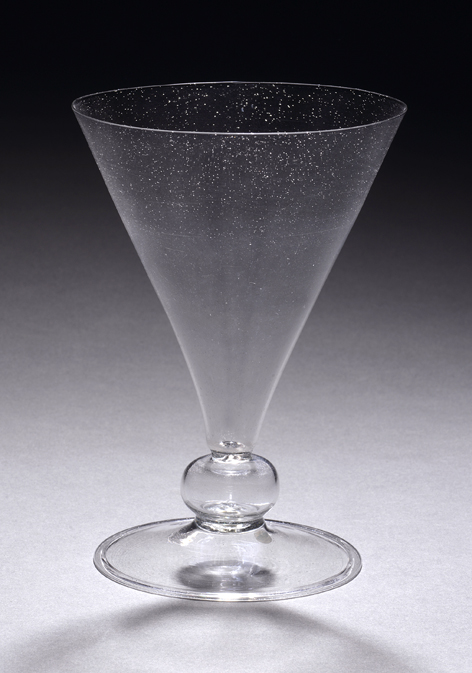


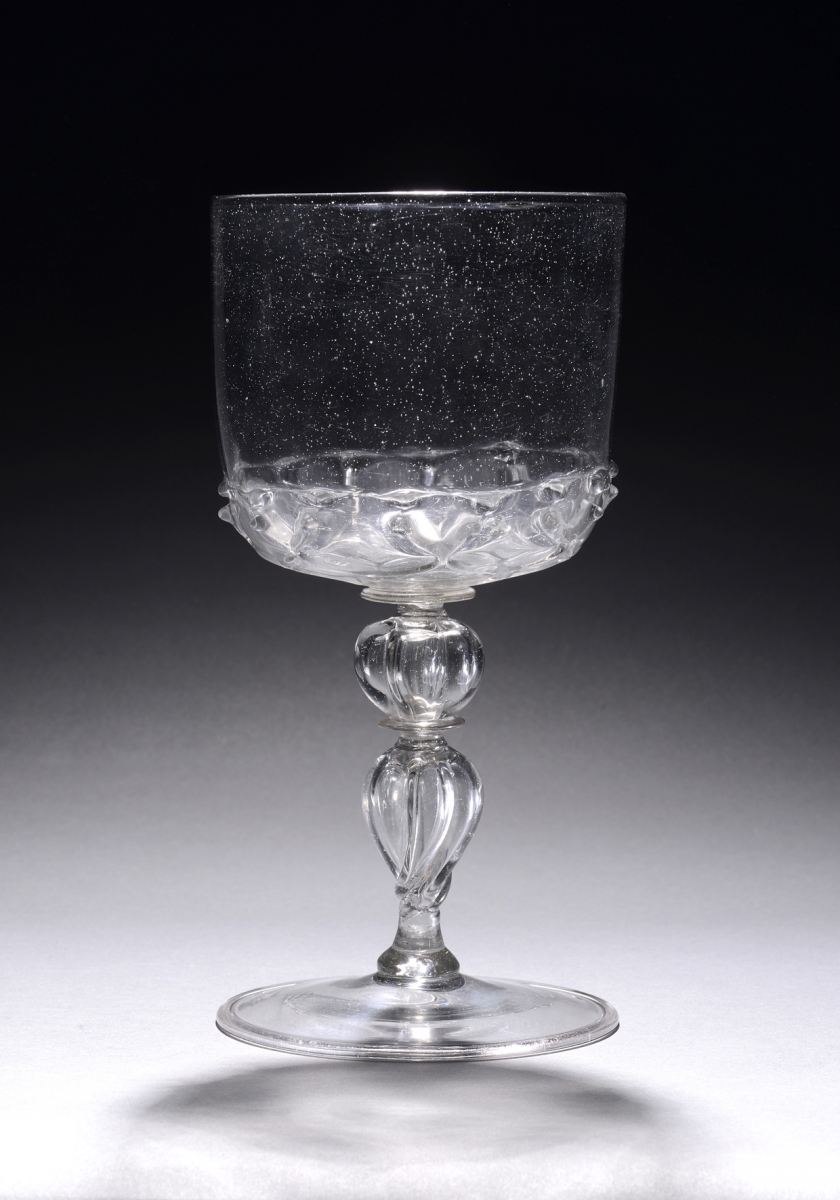

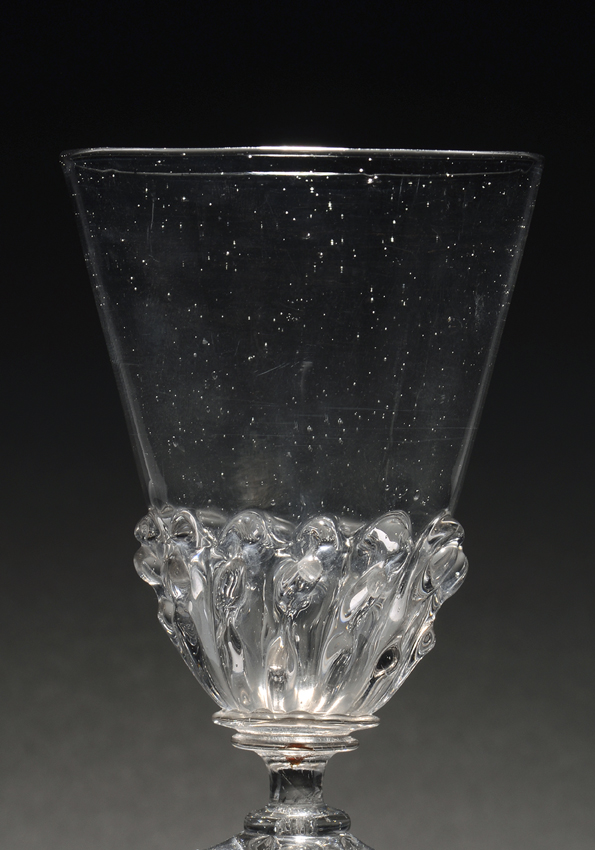


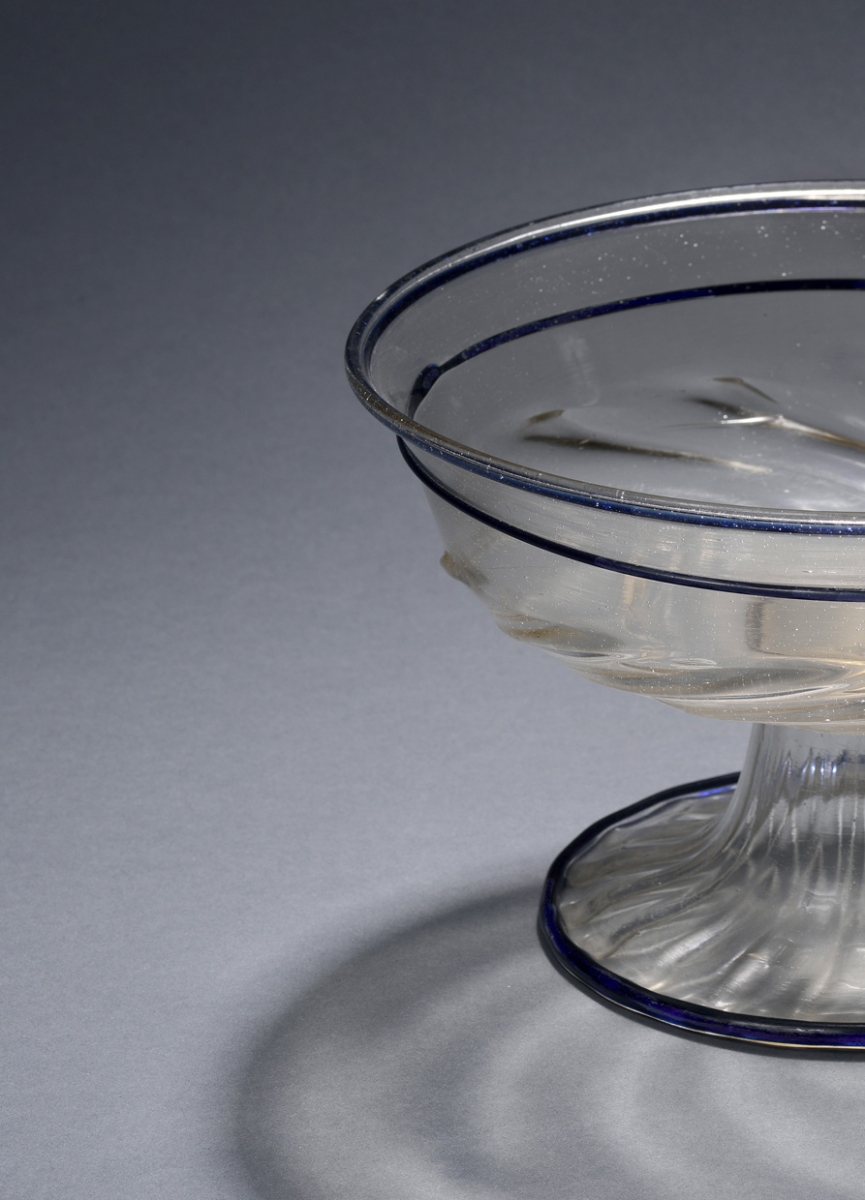
 NIEUWE SPIEGELSTRAAT 55
NIEUWE SPIEGELSTRAAT 55